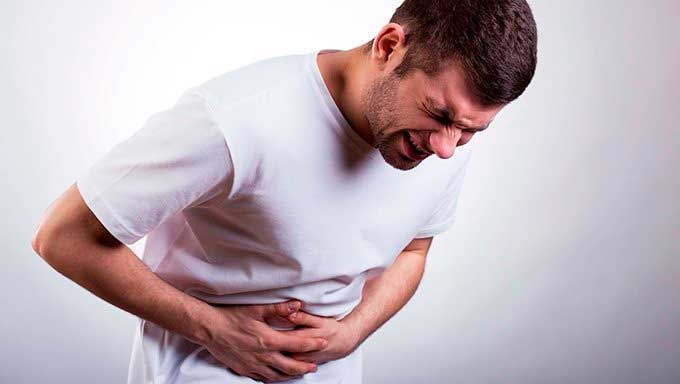
Living life on the fast lane! Well, it has consequences, like heart disease, diabetes and stones in the gall bladder. A quick refresher on your biology class – the gallbladder is a small sac-like organ located on the right side of the body under the liver.
This organ stores bile produced by the liver which helps digest fats. When signalled, it releases bile into the small intestine through tubes or ducts. Sometimes, substances in the bile can crystallize in the gallbladder, leading to the formation of stones. Gall stones are harmless but sometimes, can cause pain, nausea or inflammation.
Types of gallbladder stones
Gallstones can be as minuscule as the grain of sand to as large as a golf ball. Some people develop just one large gallstone whereas some have their gallbladder infested with gallstones as large as pebbles.
Cholesterol Stones – These are yellow to green in colour and are more common.
Pigment Stones – Smaller and darker, these stones are made up of bilirubin, from the bile which again comes from the liver.
What causes gallstones?
Several reasons including an unhealthy lifestyle can result in having gall stones. Bile containing too much cholesterol or too much bilirubin or concentrated leftover bile inside the sac can all cause gall bladder stones or complications. Here are a few causes:
Genes– Like blood pressure or blood sugar, you can inherit this condition. It is more likely to occur in women.
Gall Bladder Malfunctioning – Sometimes, gallbladder due to chemical imbalances can lead to the bile stored in it to become lumpy or crystallized, thus, forming stones.
Diet – Our diet if rich in bad cholesterol and bad fats can cause the bile stored in the gall bladder to also have more cholesterol content in it. This increases the risk of gallstones formation.
Being Overweight – Obesity can raise cholesterol level in the body and make it harder for the gall bladder to empty completely. This then raises the risk of developing Gall Bladder Stones.
Diabetes – Diabetic people are more likely to develop gallstones, since such people tend to have higher levels of triglycerides.
Synthetic Hormonal Treatment – Many infertile couples receive synthetic hormones to become pregnant, while the fertile ones take birth control pills to avoid getting pregnant. Whatever the case, the extra estrogen from such hormonal treatment increases the cholesterol in the body and make it harder for the gall bladder to empty.
Cholesterol-Lowering Medication – Some of these medicines boost the cholesterol content in the bile, resulting in cholesterol stones formed in the gall bladder.
Fasting – Irregular eating habits, fasting for a ritual or crash dieting, are sometimes called silent killers. Here’s why? When fasting, the gall bladder may not squeeze as much as required, which is why they cannot empty themselves completely keeping some residual bile fluid which later on can form stones.
Losing weight too quickly – Losing weight all of a sudden has multiple side-effects on our bodies. One such side effect is when the liver makes extra cholesterol which can lead to gall bladder stones.
Symptoms
Gallstones can get unnoticed at times until your doctor performs an ultrasound on you. However, when the symptoms arise, they can be as follows:
- Indigestion including heartburn, bloating, acidity and gastric pain.
- Severe pain in the upper belly area and upper back
- Nausea
- Vomiting green bile like substance
- Fever with chills
Complications of gallstones
These include:
- Inflammation of the gallbladder due to a stone lodged in the neck of the gallbladder. This condition is called Cholecystitis which can cause severe pain and fever.
- Also, blockage of the bile duct obstructing the bile flow to the small intestine causing severe pain, infection, and fever.
- Blockage of the pancreatic duct which secretes pancreatic juices, aiding in digestion, causing intense pain, and arising a life-threatening situation.
- Gallbladder Cancer is a rare complication which might arise in people with a history of gallstones.
Preventive Measures
ü Never skip your meals
ü For losing weight the mantra is slow and steady weight loss.
ü Eat more high-fibre foods including, whole-grains, fruits, and vegetables.
ü Exercise regularly and maintain a healthy diet and weight.
ü Avoid becoming obese which can make you vulnerable to developing gallstones.
Treatment
People who experience gall bladder stones symptoms, usually require gall bladder removal surgery.
Cholecystectomy
This is the surgical removal of the gallbladder performed either via open surgery or laparoscopy.
In the laparoscopic surgery, several tiny incisions of (5-10 mm) are made in the upper abdomen with instruments that are sometimes smaller than the nib of a fountain pen through punctures measuring barely half an inch, or through natural bodily orifices. Since incisions are small in this, it leads to reduced post-operative pain, shorter hospital stay and quicker recovery.
Ursodeoxycholic Acid
People with cholesterol stones are given this treatment which takes more than 24 months to dissolve the stones. This, however, is the only reliable treatment when a patient cannot be administered anesthesia.
Lithotripsy
Ultrasonic shock waves are given to the gallstones to break them up. If the gallstones become smaller, they can pass safely through excretion. This is a very uncommon method of treating gallstones and only done in case of fewer gallstones.
Endoscopic Retrograde Cholangiopancreatolography
Commonly known as ERCP this requires a fiber-optic camera, also called endoscope goes into the mouth via the digestive system reaching the gallbladder. An electrical wire widens the opening of the bile duct, thus, removing the stones or letting them pass into the intestine.
You won’t need treatment if your gallstones don’t cause symptoms. Still, you may want to make lifestyle changes to prevent them from getting bigger and causing problems.
